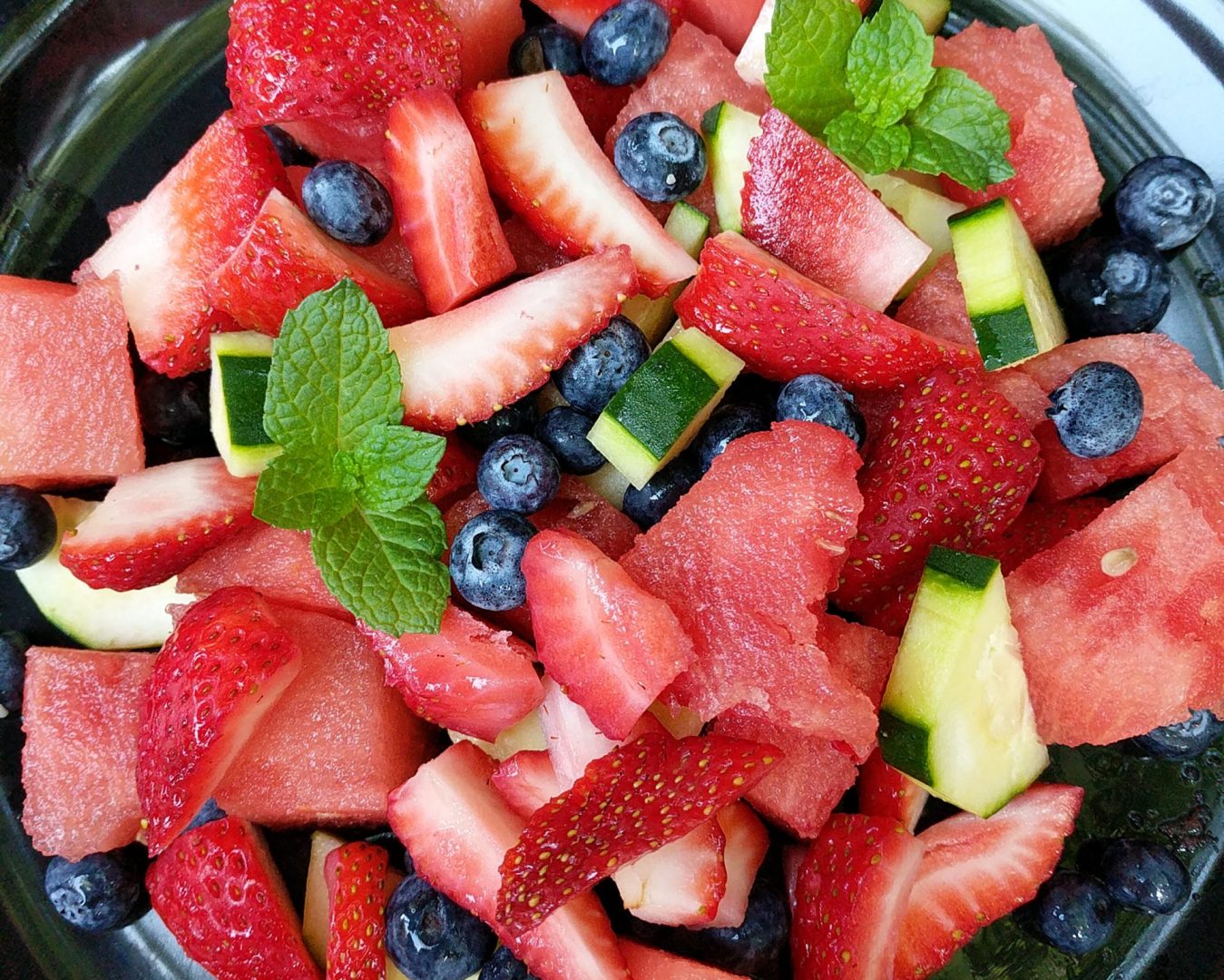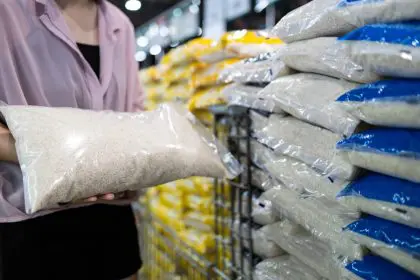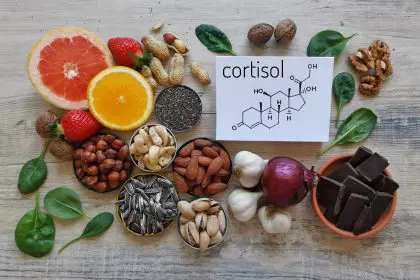The persistent struggle to drink enough water throughout busy days has left countless people chronically dehydrated without realizing it. Despite carrying water bottles and setting phone reminders, many individuals fall short of their daily hydration goals, experiencing fatigue, headaches, and decreased mental clarity as a result.
What most people don’t realize is that nearly 20% of daily fluid intake can come from food sources rather than beverages alone. This revelation opens up an entirely new approach to staying properly hydrated through strategic meal planning and smart snacking choices that make hydration both effortless and enjoyable.
The human body requires consistent fluid replenishment to maintain optimal function, but traditional advice focuses almost exclusively on plain water consumption. This narrow approach ignores the significant hydration potential found in everyday foods that can transform how people meet their fluid needs while simultaneously providing essential nutrients.
Water-rich foods offer advantages beyond simple hydration, delivering vitamins, minerals, antioxidants, and fiber that plain water cannot provide. These nutritional powerhouses support multiple aspects of health while contributing meaningfully to daily fluid requirements, making them invaluable allies in the quest for optimal hydration.
Understanding which foods pack the most hydrating punch allows people to create meals and snacks that work double duty, satisfying hunger while simultaneously boosting fluid levels. This approach proves particularly beneficial for individuals who struggle with plain water consumption or forget to drink regularly throughout the day.
The cucumber champion leading the hydration pack
Food 1: Cucumber stands as the undisputed champion of hydrating foods, containing an impressive 95% water content that delivers approximately 10 ounces of fluid per whole cucumber. This refreshing vegetable provides substantial hydration while contributing only 45 calories, making it an ideal choice for weight-conscious individuals seeking maximum hydration benefits.
Beyond its exceptional water content, cucumber supplies over 40% of daily vitamin K requirements, supporting bone health and proper blood clotting function. The high water content combined with natural electrolytes makes cucumber particularly effective for post-exercise recovery or hot weather hydration needs.
The versatility of cucumber allows for endless incorporation into daily meals. From refreshing agua frescas and smoothies to crunchy salad additions and cooling gazpacho soups, cucumber provides hydration in countless delicious formats that never feel boring or repetitive.
The mild flavor profile of cucumber makes it accessible to even picky eaters, while its satisfying crunch provides textural interest that plain water lacks. This combination of hydration, nutrition, and palatability explains why cucumber consistently ranks as the top choice for food-based hydration strategies.
Zucchini’s surprising hydration power
Food 2: Zucchini matches cucumber’s impressive 95% water content while offering unique nutritional benefits that make it a hydration superstar. One cup of chopped zucchini delivers 4.2 ounces of water alongside a quarter of daily vitamin C needs, supporting immune function while boosting fluid levels.
The abundance of antioxidants in zucchini provides additional health benefits beyond hydration, helping combat oxidative stress and inflammation throughout the body. These protective compounds work synergistically with the high water content to support overall wellness in ways that plain water consumption alone cannot achieve.
Zucchini’s adaptability in cooking makes it easy to incorporate into both sweet and savory dishes. Spiralized zucchini noodles provide a hydrating base for pasta dishes, while zucchini bread and muffins offer unexpected sources of fluid intake that feel more like treats than health foods.
The mild taste of zucchini allows it to blend seamlessly into smoothies and soups, providing significant hydration without altering flavors dramatically. This stealth hydration approach proves particularly valuable for individuals who struggle to consume enough fluids through traditional methods.
Celery’s crisp hydration delivery
Food 3: Celery delivers 95% water content in a satisfying, crunchy package that provides 3.9 ounces of water per three medium stalks. The natural sodium content in celery makes it particularly effective for replenishing electrolytes lost through sweating or physical activity.
The antioxidants found in celery help combat oxidative stress that can contribute to chronic disease development. These protective compounds work alongside the high water content to support cellular health and proper hydration at the microscopic level.
Celery’s natural saltiness makes it an ideal vehicle for healthy fats like nut butters or hummus, creating satisfying snacks that combine hydration with sustained energy. The fiber content helps slow digestion, allowing for steady fluid absorption rather than rapid processing.
The convenience of celery as a grab-and-go snack makes it invaluable for busy individuals who need portable hydration options. Pre-cut celery sticks can be prepared in advance and stored for easy access throughout the week.
Tomatoes bringing juicy hydration
Food 4: Tomatoes provide 94% water content along with 4 ounces of fluid per medium fruit, making them excellent hydration sources that double as flavorful meal components. The low calorie content combined with high water levels makes tomatoes ideal for volume eating approaches to hydration.
The lycopene content in tomatoes provides powerful antioxidant protection that may help prevent various diseases while supporting cardiovascular health. This nutrient becomes more bioavailable when tomatoes are cooked, making both fresh and prepared tomato dishes valuable for hydration and health.
Fresh tomatoes shine in summer salads and salsas, providing cooling hydration during hot weather when fluid needs increase. Cooked tomatoes in sauces, soups, and stews offer comforting hydration during cooler months when people naturally drink less water.
The umami flavor compounds in tomatoes add satisfying depth to meals, making hydrating dishes more appealing and sustainable for long-term dietary patterns. This flavor enhancement helps ensure consistent consumption of hydrating foods.
Cabbage’s unexpected hydration contribution
Food 5: Cabbage surprises many with its 92% water content, delivering 2.2 ounces of fluid per cup while providing valuable compounds that may help prevent cancer and reduce inflammation. This cruciferous vegetable proves that hydrating foods don’t have to be traditionally juicy to contribute meaningfully to fluid intake.
The fiber content in cabbage supports digestive health while helping maintain steady hydration levels through improved water retention in the digestive tract. This dual benefit makes cabbage particularly valuable for individuals with digestive concerns that might affect hydration status.
Raw cabbage in slaws and salads provides refreshing crunch along with significant hydration, while cooked cabbage in soups and stews offers warming comfort food that secretly boosts fluid intake. The versatility allows for year-round incorporation regardless of weather or season.
The budget-friendly nature of cabbage makes it an accessible hydration option for individuals seeking cost-effective ways to boost fluid intake. A single head of cabbage provides multiple servings of hydrating nutrition at minimal expense.
Mushrooms offering unique hydration benefits
Food 6: Mushrooms contain 92% water content, providing 2.2 ounces of fluid per cup while delivering unique nutrients that support heart and gut health. These fungi offer hydration in an unexpected package that adds umami depth to countless dishes.
The low calorie content of mushrooms allows for generous portions that significantly boost meal hydration without impacting weight management goals. The satisfying texture and rich flavor make mushroom-based dishes feel substantial despite their high water content.
Different mushroom varieties offer varying flavor profiles and nutritional benefits while maintaining consistently high water content. This diversity prevents boredom while ensuring continued hydration benefits from regular consumption.
The prebiotic compounds in some mushrooms support gut health, which can improve overall nutrient absorption and hydration efficiency throughout the body. This connection between gut health and hydration highlights the multifaceted benefits of food-based fluid intake.
Strawberries delivering sweet hydration
Food 7: Strawberries provide 91% water content along with 5.3 ounces of fluid per cup, making them among the most hydrating fruits available. The high fiber and vitamin C content provide additional health benefits that pure water consumption cannot match.
The natural sweetness of strawberries makes them appealing to individuals who struggle with plain water consumption, providing hydration in a format that feels more like dessert than health food. This psychological advantage can significantly improve long-term hydration habits.
Fresh strawberries work beautifully in smoothies, salads, and as standalone snacks, while frozen strawberries maintain their hydration benefits in year-round applications. The versatility ensures consistent access to strawberry hydration regardless of seasonal availability.
The antioxidant content in strawberries provides anti-inflammatory benefits that may enhance exercise recovery, making them particularly valuable for active individuals who have elevated hydration needs.
Watermelon’s summer hydration perfection
Food 8: Watermelon lives up to its name with 91% water content, delivering 4.9 ounces of fluid per cup in a naturally sweet package that screams summer refreshment. The low sugar content despite natural sweetness makes watermelon suitable for various dietary approaches.
The lycopene and other antioxidants in watermelon support heart health while providing the hydration benefits that make this fruit a warm-weather staple. These compounds work synergistically with the high water content to support cardiovascular function during heat stress.
Fresh watermelon chunks provide immediate hydration and cooling relief, while watermelon juice offers concentrated fluid intake for times when eating solid food feels challenging. Frozen watermelon pieces create refreshing treats that encourage fluid consumption.
The electrolyte content in watermelon helps replace minerals lost through sweating, making it particularly valuable for outdoor activities and exercise recovery. This natural electrolyte replacement proves more appealing than many commercial sports drinks.
Cantaloupe’s beta-carotene hydration boost
Food 9: Cantaloupe offers 90% water content with 5 ounces of fluid per cup, while providing substantial beta-carotene that supports immune function and vision health. This orange melon delivers hydration alongside nutrients that plain water cannot provide.
The natural sweetness and pleasant texture of cantaloupe make it widely acceptable across different age groups and taste preferences. This broad appeal helps ensure consistent consumption and sustained hydration benefits for entire families.
Fresh cantaloupe works well in fruit salads and smoothies, while frozen pieces create cooling treats that encourage increased fluid intake during hot weather. The versatility supports year-round hydration strategies regardless of seasonal preferences.
The potassium content in cantaloupe supports proper muscle and nerve function, making it particularly valuable for individuals who exercise regularly and need both hydration and electrolyte replacement.
Jicama’s crunchy hydration surprise
Food 10: Jicama provides 90% water content along with 3.8 ounces of fluid per cup in a satisfying, crunchy package that many people haven’t discovered. This root vegetable offers hydration with substantial fiber content that supports digestive health.
The mild, slightly sweet flavor of jicama makes it versatile for both sweet and savory applications. Raw jicama sticks provide hydrating snacks with satisfying crunch, while cooked jicama adds texture and fluid to stir-fries and soups.
The prebiotic fiber in jicama supports beneficial gut bacteria, which can improve overall health and potentially enhance hydration efficiency at the cellular level. This gut health connection adds another layer of benefit beyond simple fluid intake.
The storage stability of jicama makes it practical for meal prep and planning, allowing individuals to prepare hydrating snacks in advance without concern about rapid spoilage or quality loss.
Kale’s nutrient-dense hydration
Food 11: Kale contains 90% water content while providing exceptional nutrient density that makes every bite count toward both hydration and vitamin intake. Though individual portions provide less total fluid than larger vegetables, the nutritional payoff proves substantial.
The variety of vitamins and antioxidants in kale work alongside hydration to support multiple aspects of health simultaneously. This efficiency makes kale valuable for individuals seeking maximum nutritional benefit from their hydration efforts.
Massaged kale salads break down tough fibers while preserving water content, creating more palatable dishes that encourage consistent consumption. Adding acidic dressings further enhances nutrient absorption while maintaining hydration benefits.
The versatility of kale in both raw and cooked applications provides multiple options for incorporating this hydrating green into daily meals without monotony or flavor fatigue.
Tofu’s protein-packed hydration
Food 12: Silken tofu provides 90% water content while delivering complete protein, making it unique among hydrating foods for its ability to support muscle health alongside fluid intake. The isoflavones in tofu offer additional heart health benefits.
The neutral flavor of silken tofu allows it to blend seamlessly into smoothies and desserts, providing hidden hydration in appealing formats. This stealth approach works well for individuals who resist obvious health foods.
Different tofu textures offer varying applications while maintaining high water content. Silken varieties work best for smoothies and dressings, while softer regular tofu provides texture in soups and stir-fries.
The plant-based protein in tofu makes it valuable for vegetarians and vegans who need to balance hydration with adequate protein intake for optimal health and muscle maintenance.
Grapefruit’s vitamin C hydration boost
Food 13: Half a grapefruit provides 88% water content along with exceptional vitamin C levels that support immune function while contributing to daily fluid intake. The natural tartness provides wake-up benefits that plain water lacks.
The fiber content in grapefruit helps slow sugar absorption while maintaining steady hydration levels throughout digestion. This sustained release approach provides more stable energy levels compared to rapid fluid intake from beverages alone.
Fresh grapefruit segments work well in salads and as breakfast components, while grapefruit juice provides concentrated hydration for individuals who prefer liquid intake methods. Both formats deliver similar hydration benefits with different practical applications.
The natural enzymes in grapefruit may support digestion and metabolism, adding functional benefits beyond simple hydration that make this citrus fruit particularly valuable for morning consumption.
Pineapple’s digestive hydration support
Food 14: Pineapple contains 86% water content while providing digestive enzymes that can improve nutrient absorption and overall digestive health. The high vitamin C content supports immune function alongside hydration benefits.
The natural sweetness and tropical flavor of pineapple make it appealing for individuals who struggle with plain water consumption. Fresh pineapple chunks provide immediate hydration satisfaction that feels more like treat than health requirement.
The bromelain enzyme in pineapple may help reduce inflammation and support recovery from exercise, making it particularly valuable for active individuals who need both hydration and anti-inflammatory support.
Fresh pineapple works well in smoothies and fruit salads, while grilled pineapple provides unexpected hydration in savory dishes that expand the typical fruit consumption patterns.
Black beans’ surprising hydration contribution
Food 15: Cooked black beans provide 66% water content while delivering substantial protein and fiber that make them unique among hydrating foods. This combination supports sustained energy levels while contributing meaningfully to daily fluid intake.
The protein content in black beans helps maintain muscle mass while providing hydration, making them particularly valuable for individuals who need to balance multiple nutritional goals simultaneously.
Black beans work well in soups, salads, and main dishes, providing hydration alongside satisfying nutrition that keeps people full longer than many other hydrating foods. This satiety factor helps prevent dehydration from forgetting to eat regularly.
The fiber content supports digestive health and may improve overall hydration efficiency by supporting better nutrient absorption and waste elimination processes that affect fluid balance.
Creating sustainable hydration habits
Building lasting hydration habits requires moving beyond the traditional focus on plain water consumption to embrace the diverse world of hydrating foods. This expanded approach makes meeting daily fluid needs more enjoyable and sustainable for long-term health maintenance.
Planning meals and snacks around water-rich foods creates natural opportunities for consistent hydration without requiring conscious effort or behavior change. This integration approach proves more successful than relying solely on remembering to drink water throughout busy days.
Seasonal variation in hydrating food choices prevents boredom while ensuring year-round hydration support. Summer melons and cucumbers give way to winter soups and stews, maintaining hydration benefits regardless of weather or temperature preferences.
The combination of hydration and nutrition found in water-rich foods provides better value than plain water alone, supporting multiple health goals simultaneously while making the pursuit of optimal hydration both practical and delicious.













